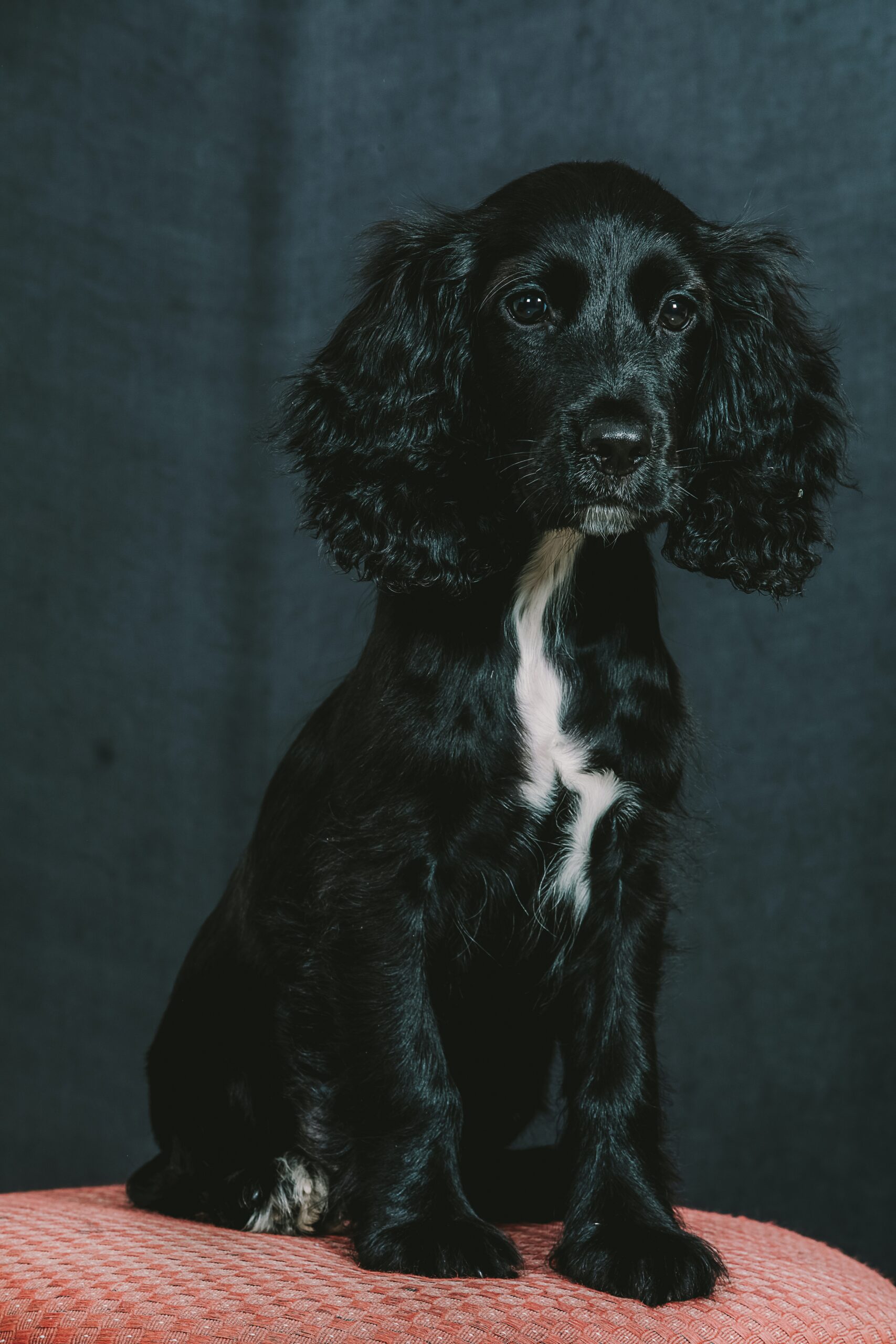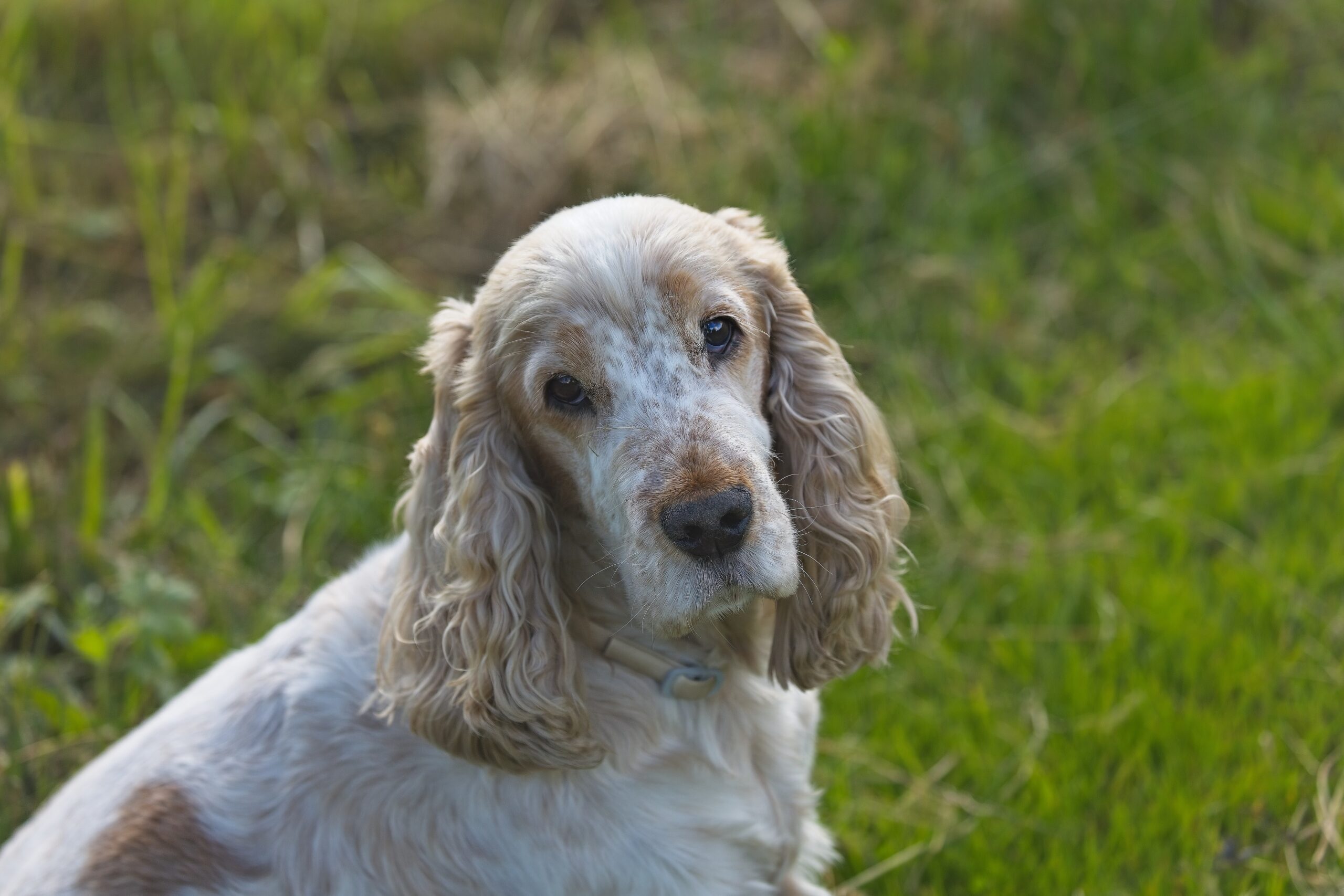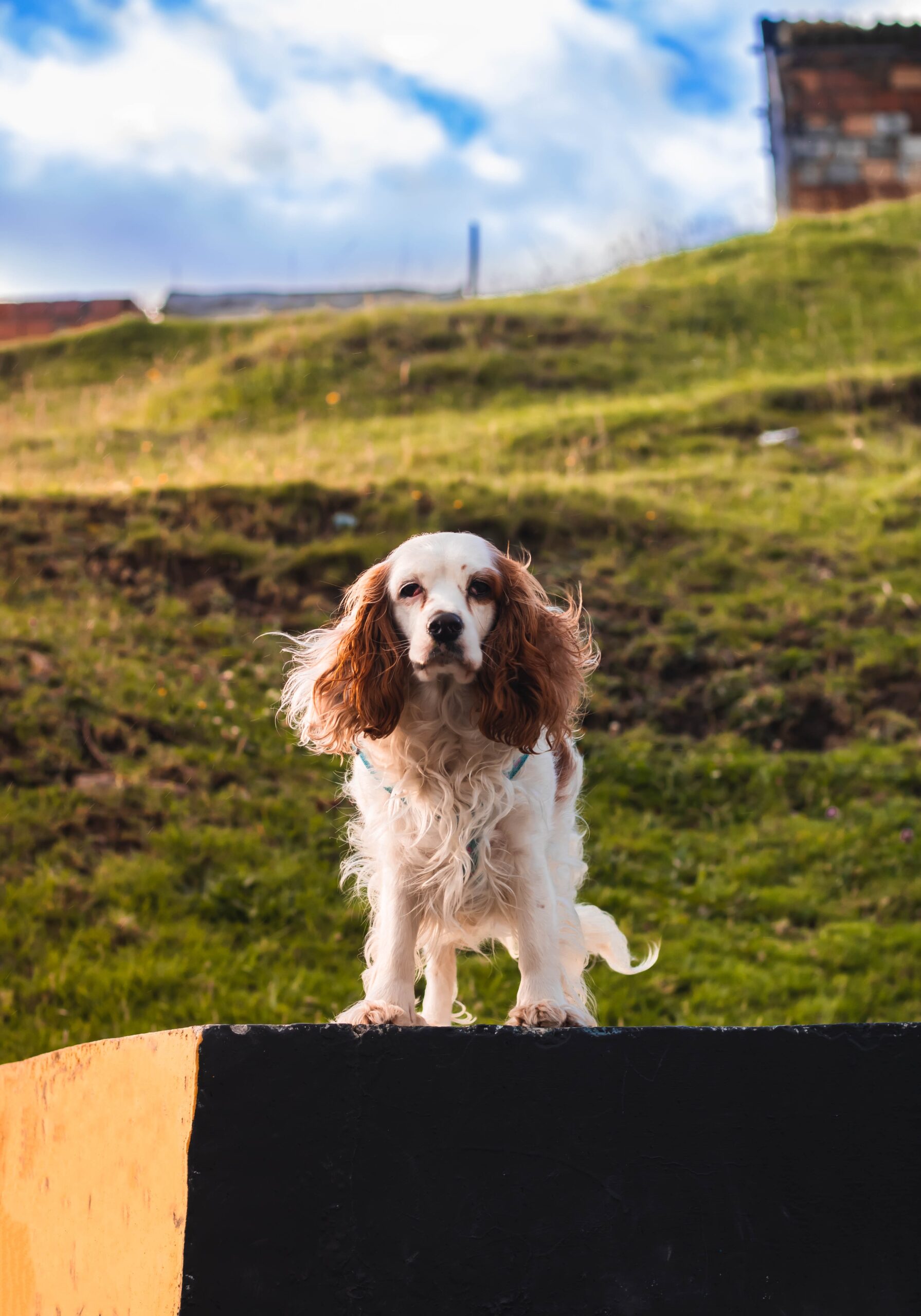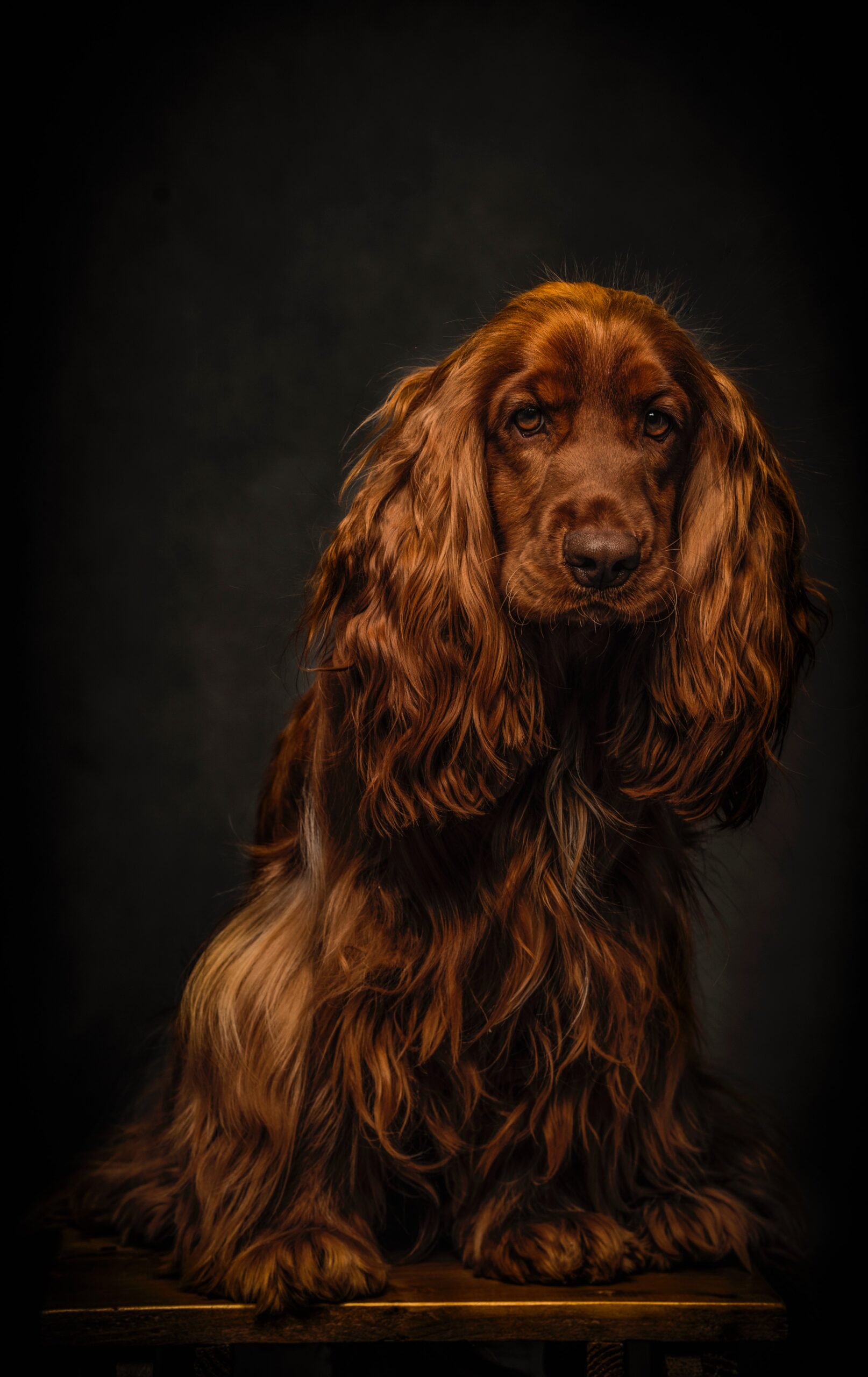English Cocker Spaniel
energetic / merry / responsive
Average sizes and life
expectancy of the breed.
Height
16-17 inches (male)
15-16 inches (female)
Weight
28-34 pounds (male)
26-32 pounds (female)
Life Expectancy
12-14 years
Breed Traits & Characteristics
About the Breed
English Cocker Spaniel admirers frequently refer to their breed as “merry.” This small, silky-coated bird dog is well-liked for his charming nature and enticing good looks. He is cheerful in the field and relaxed at home.
The English Cocker Spaniel is a small-framed sporting dog with a shoulder height of 15 to 17 inches. The luscious, close-lying ears frame the delicately sculpted head, which has dark, melting eyes that communicate a vigilant and dignified look. The medium-length coat is velvety to the touch and comes in a variety of eye-catching hues and designs. The word “balance” is crucial to comprehending the breed because the EC is well-balanced in terms of movement, construction, and disposition. The persistent, eager-to-please hunter’s assistant who is renowned across the world for his capacity to flush and retrieve gamebirds beats beneath the EC’s outward beauty. There is no more lovely and acceptable household friend for individuals who like more domestic activities.
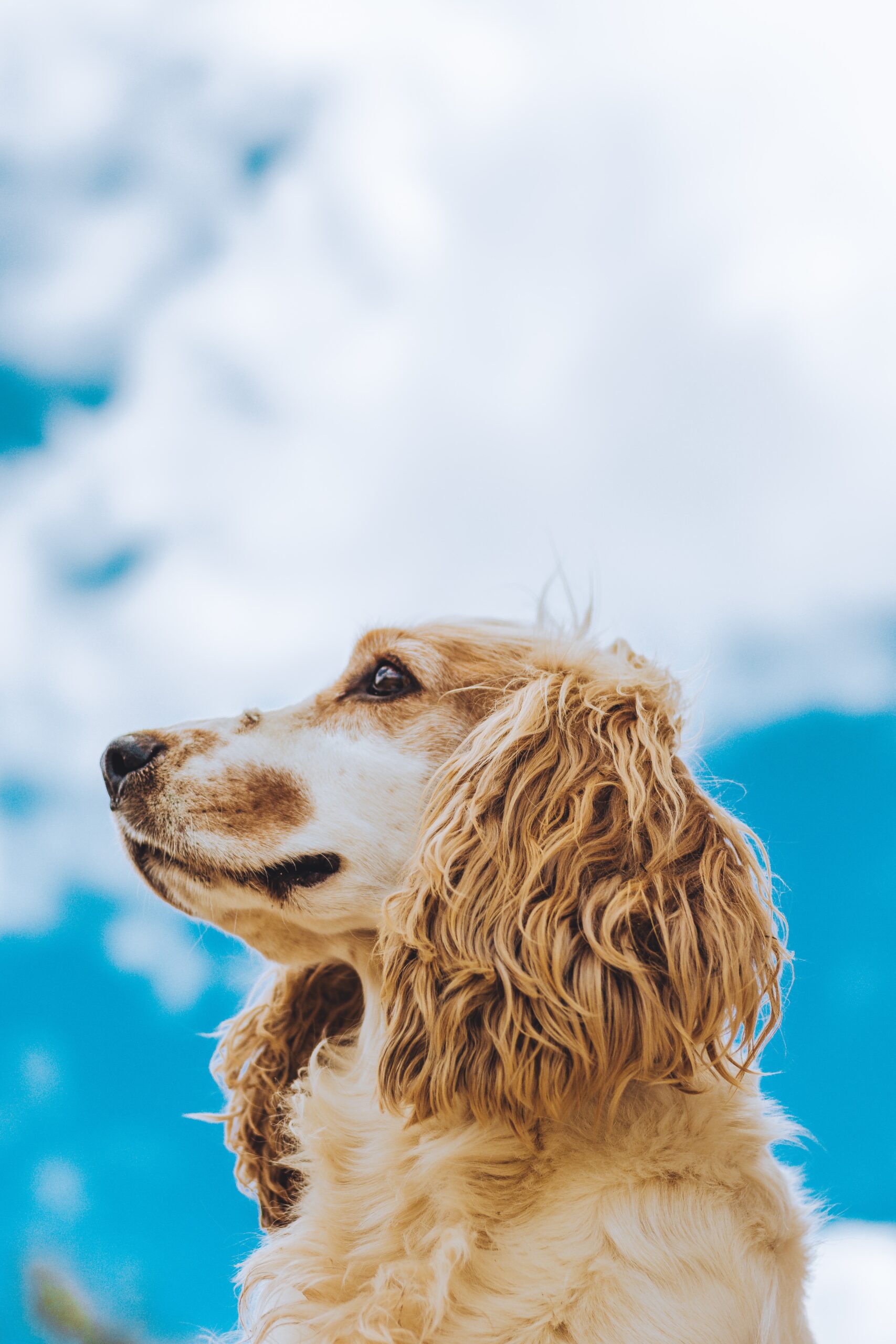
What To Expect When Caring For a English Cocker Spaniel
Owning a dog is not just a privilege; it’s a responsibility. They depend on us for, at minimum, food and shelter, and deserve much more. When you take a dog into your life, you need to understand the commitment that dog ownership entails.
 Health
Health
The English Cocker is generally a healthy breed, however there are reported instances where certain genetic health issues manifest. These include adult-onset neuropathy, hip dysplasia, hereditary nephropathy, and progressive retinal atrophy. Breeding stock belonging to a responsible breeder will undergo testing for ailments that can harm the breed. The teeth should be washed frequently using a toothpaste made for dogs, and the English Cocker's ears should be constantly examined for indications of infection.
Recommended Health Tests From the National Breed Club:
- Patella Evaluation
- Hip Evaluation
- PRA Optigen DNA Test
 Grooming
Grooming
The majority of English Cockers have a pretty thick coat that needs regular maintenance, including a thorough brushing and combing at least once a week to keep the dog looking his best and to avoid mats and tangles. Additionally, the dog's hair is typically cut in a few places, such as around the paws, on the face, under the neck, on the inside of the ears, and under the tail, approximately once a month. To do an overall trim and maintain the English Cocker's tidy appearance, the owner can learn how to use clippers, thinning shears, or a stripping tool. The nails should be cut at least once a month, and the ears should be examined weekly for wax buildup and debris.
 Exercise
Exercise
The majority of English Cockers have a pretty thick coat that needs regular maintenance, including a thorough brushing and combing at least once a week to keep the dog looking his best and to avoid mats and tangles. Additionally, the dog's hair is typically cut in a few places, such as around the paws, on the face, under the neck, on the inside of the ears, and under the tail, approximately once a month. To do an overall trim and maintain the English Cocker's tidy appearance, the owner can learn how to use clippers, thinning shears, or a stripping tool. The nails should be cut at least once a month, and the ears should be examined weekly for wax buildup and debris.
 Training
Training
With a merry, devoted disposition, the English Cocker was developed to follow instructions in the field, and the breed is still very eager to please. He is easy to train and enjoys working with his person so long as only positive methods are used. The EC will react poorly to a harsh or negative training approach; he must love and respect his person, never fear them. Early socialization is recommended to ensure a well-adjusted companion who is adaptable to a variety of situations.
 Nutrition
Nutrition
The English Cocker should be fed premium dog food that is suitable for its age (puppy, adult, or senior) and degree of activity. Watch your dog's caloric intake and weight since some English Cockers are prone to obesity. Treats can be a valuable training tool, but offering them in excess might lead to obesity. Give table scraps infrequently, if at all, and steer clear of cooked bones and items with a lot of fat. Discover which foods fit the bill for canine consumption and which don't. If you have any worries about your dog's weight or diet, consult your veterinarian.
History
These “sporting dogs” are broken down by function, or how they hunt. They are also known as gundogs or bird dogs. They are European utilitarian breeds like spaniels, pointers, setters, and retrievers. The oldest of these are typically thought to be Spaniels.
The spaniel breeds of England originated from dogs with Spanish ancestry (the word “spaniel” derives from “Spanish”) centuries ago. The use of dogs in conjunction with nets, bows, and occasionally falcons by bird hunters occurred long before the development of dependable hunting rifles.
Early authorities classified spaniels into two types: water spaniels and land spaniels. The vastness of the land Spaniels eventually led to division. The smaller kind, known as a “cocking spaniel,” was used to flush woodcock. The larger breeds were called “springing spaniels” and “field spaniels.”
As dog exhibitions became more popular and Victorian England became obsessed with classification, many spaniel breeds were recognized as official breeds in the 19th century. Thus, the English Springer Spaniel, Field Spaniel, English Cocker Spaniel, and all other British spaniel breeds are still in existence today.
Early 20th-century dog enthusiasts in America created the companion-bred Cocker. In comparison to its English relative, it was smaller, had a more voluminous coat, a shorter head, and a more domed skull. In 1935, supporters of the traditional English hunting dog established the English Cocker Spaniel Club of America.

